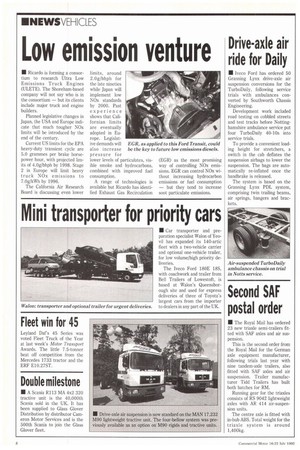Low emission venture
Page 10

If you've noticed an error in this article please click here to report it so we can fix it.
• Ricardo is forming a consortium to research Ultra Low Emissions Truck Engines (ULETE). The Shoreham-based company will not say who is in the consortium — but its clients include major truck and engine builders.
Planned legislative changes in Japan, the USA and Europe indicate that much tougher NOx limits will be introduced by the end of the century.
Current US limits for the EPA heavy-duty transient cycle are 5.0 grammes per brake horsepower hour, with projected limits of 4.0g/bhph by 1998. Stage 2 in Europe will limit heavy truck NOx emissions to 7.0g/kWh by 1996.
The California Air Research Board is discussing even lower limits, around 2.0g/bhph for the late nineties while Japan will implement low NOx standards by 2000. Past experience shows that Californian limits are eventually adopted in Europe. Legislative demands will also increase pressure for lower levels of particulates, visible smoke and hydrocarbons, combined with improved fuel consumption.
A range of technologies is available but Ricardo has identified Exhaust Gas Recirculation
(EGR) as the most promising way of controlling NOx emissions. EGR can control NOx without increasing hydrocarbon emissions or fuel consumption — but they tend to increase soot particulate emissions.
















































































